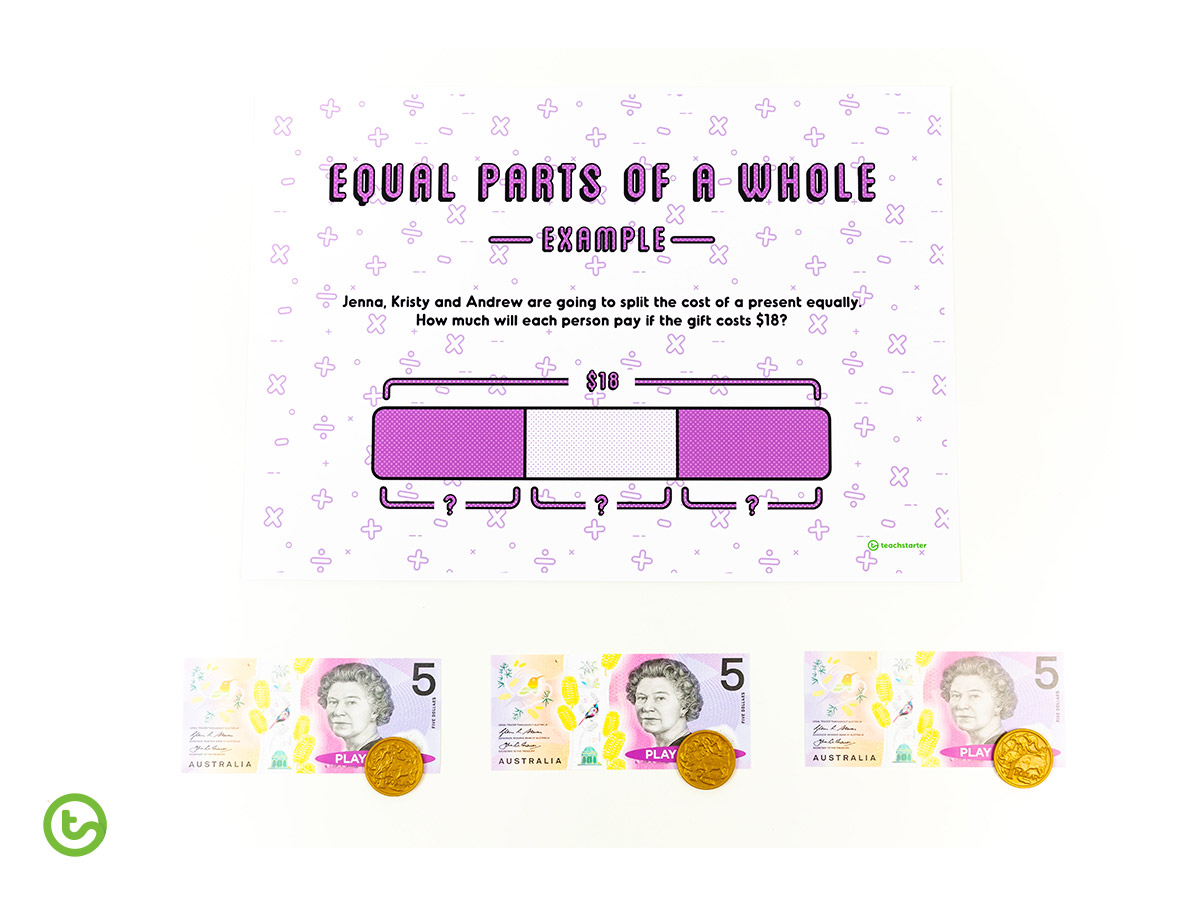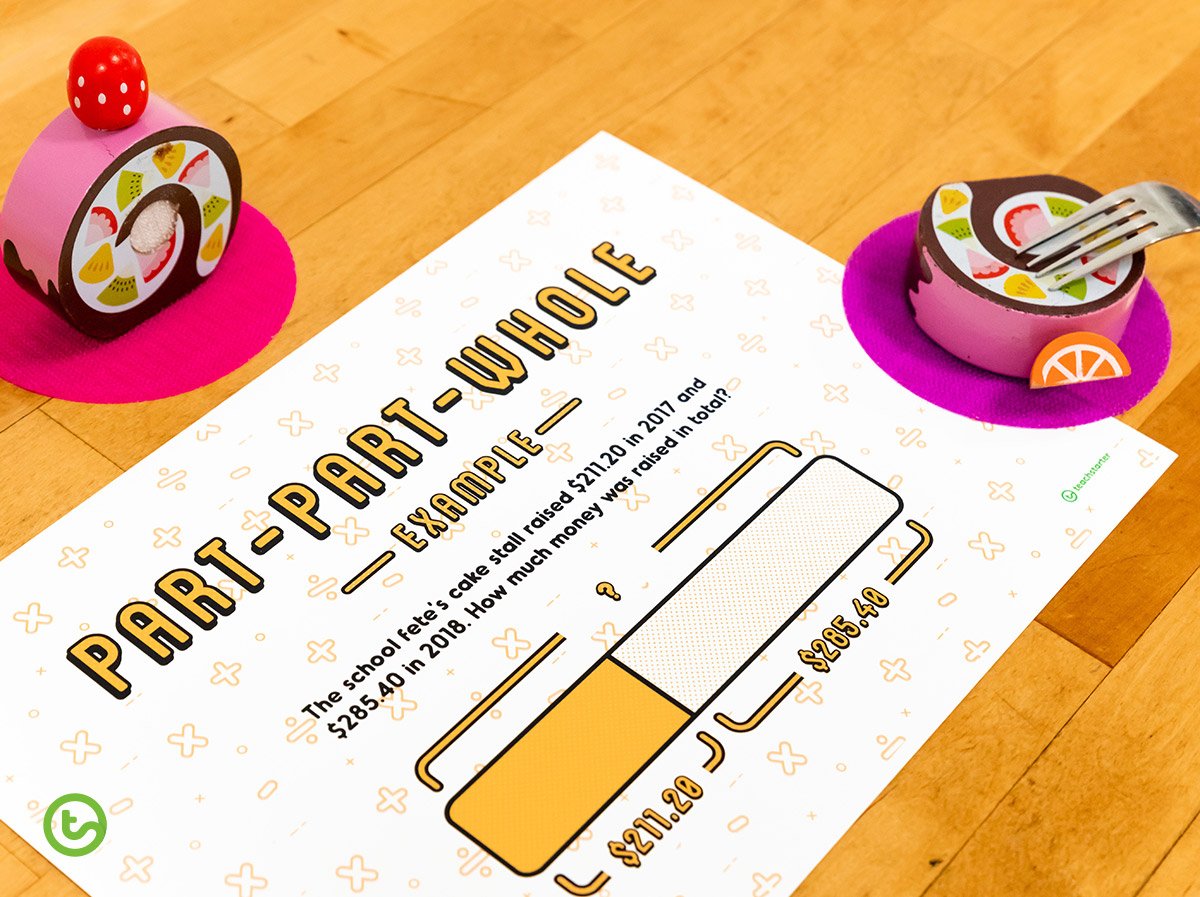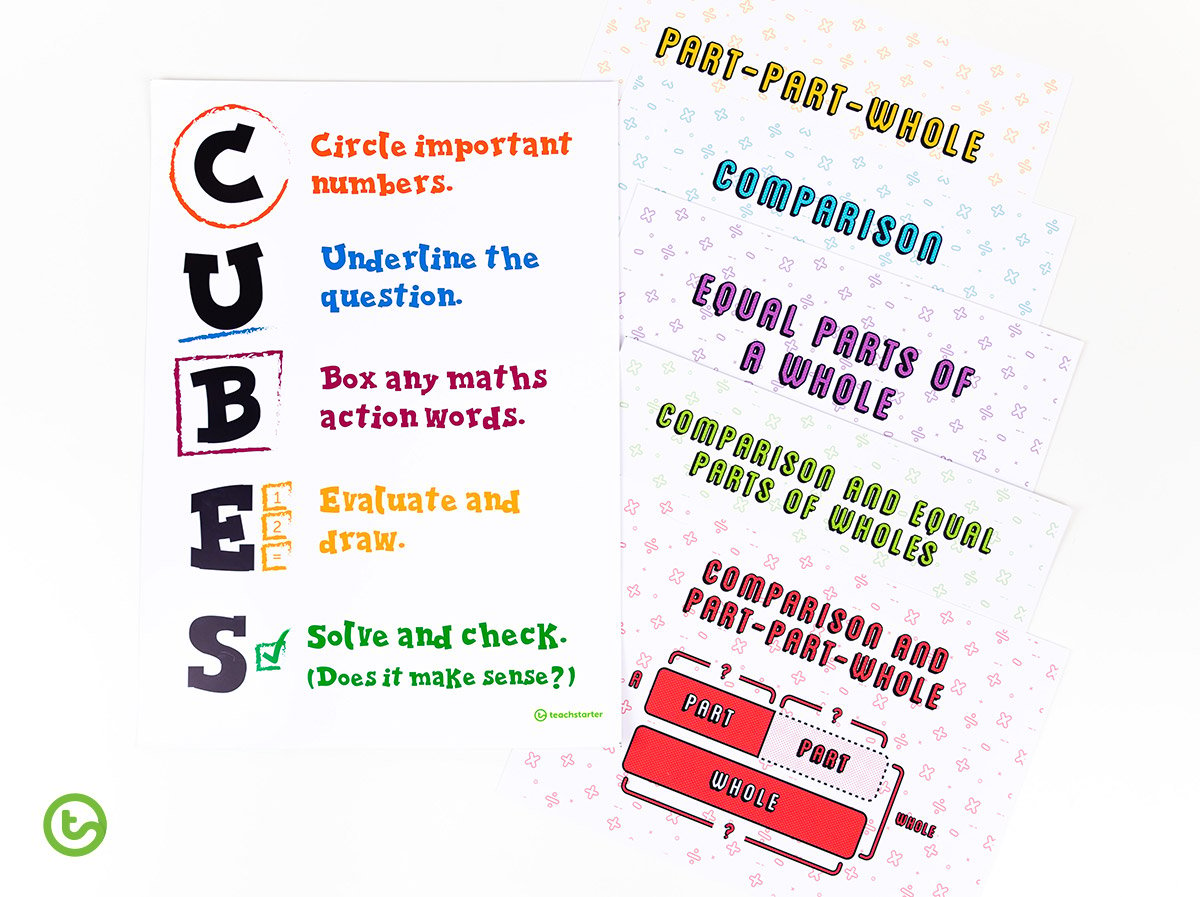Teaching mathematical problem solving to your students is a crucial element of mathematical understanding. They must be able to decipher word problems and recognise the correct operation to use in order to solve the problem correctly (rather than freaking out as soon as they see a mathematical problem in words!!!). But what is the best strategy for embedding this knowledge into your students? Enter the Bar Model Method.
What is the Bar Model?
Introducing the Bar Model: an explicit teaching and learning strategy for problem solving. It can be applied to all operations, including multiplication and division!
Developed in Singapore in the 1980s, the Bar Model has been credited with accelerating Singapore primary students to be ‘among the best mathematical problem solvers in the world‘.
The Bar Model combines the concrete (drawings) and the abstract (algorithms or equations), to help the student solve the problem.
How Does the Bar Model Work?
Bars (horizontal rectangles) represent the problem.
- The length of the bar represents the quantity.
- The location of the bars show the relationship between the quantities.
Visualising this relationship assists the student in deciding which operation to use to solve the problem.
The student labels the known quantities with numbers, and then labels the unknown quantities with question marks.
The three basic structures are:
- Part-Part-Whole
- Comparison
- Equal Parts.
Our Bar Model Poster Pack is a perfect way to introduce your students to the basics of the Bar Model.
Isn’t Bar Model Just Another Way of Teaching Part-Part-Whole?
Many teachers (particularly in the lower primary years), will recognise elements of the Bar Model as being similar to the Part-Part-Whole method we’ve been teaching forever.
The Bar Model could be looked at as an extension of this concept. It can be used by students right through primary school (and beyond); not only to solve addition and subtraction problems but to tackle multiplication and division word-based problems as well.
Teaching with the Bar Model
The Bar Model can be incorporated into your current method of problem solving instruction. Take, for example, the CUBES strategy; the E stands for Evaluate and Draw.
As a Bar Model is a drawing, this is the perfect place for it to be used!
Try using the Bar Model in your problem solving sessions! Here are some fantastic Lower Primary, Middle Primary and Upper Primary problem solving cards which can be solved using the CUBES Strategy and the Bar Model together.
Why Should We Take Notice of the Bar Model?
As stated above, the Bar Model originated in Singapore and student success has been evidenced there in a study conducted by Nottingham Trent University. Australian educators who are on top of international trends are taking notice and getting in on the Bar Model action.
The effectiveness of the Bar Model has been studied in Australian schools, where it was found that students who ‘represented the information and relationship on the bars successfully solved the problems’.
What this means for us, as teachers, is that if we teach the Bar Model effectively and get our students using it correctly, we may replicate the successes shown in the research.
In an interview with Teacher Magazine, John Fleming, Deputy Chair of the Australian Institute for Teaching and School Leadership, speaks about how Haileybury College has incorporated the Bar Model into its explicit teaching. You can listen to more to John in his podcast, Teaching Methods: John Fleming – explicit instruction myths and strategies.











Comments